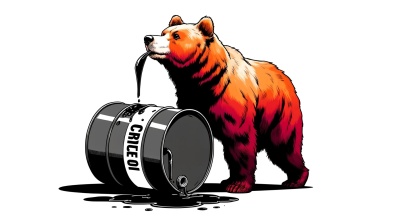After disappointing in the first three months of 2016, Hungarian economic activity rebounded in the second quarter as GDP growth accelerated to 2.6% y/y, a flash estimate released by statistics office KSH showed on August 12.
The result suggests that the weakness seen in the first quarter may - as the government claims - have been mainly due to one-time effects in the industrial and construction sectors, which appear to have faded. Recent sectorial data also offer glimmers of hope for recovery in Hungarian industry and construction, which – together with strong domestic consumption – could contribute to sustaining the momentum of growth in the second half of the year.
That's certainly what Economy Minister Mihaly Varga hopes. Welcoming the second quarter uplift following a summer spent hastily rejigging strategy in a bid to revive growth and stave off the labour shortage stalking Hungary, the official claimed regained momentum in car making, agriculture and retail mean there's a good chance growth will meet the government's target of 2.5%, despite the poor start to the year.
Indeed, economic expansion in April-June significantly exceeded expectations. Driven by the surprisingly persistent lull in the auto sector no doubt, the consensus in a Bloomberg poll had predicted growth would be capped at 1.9%.
However, Hungary shrugged that off to join the regional trend. Across the Central and South Eastern Europe, countries reported a "a surprisingly strong batch of Q2 GDP figures,” analysts at Capital Economics noted. Growth in the region as a whole picked up to a robust average of 3.7% y/y from 3.0% in Q1.
Yet analysts are still to be convinced that the government's target is within reach.
Temporary
Overturning the dire 0.8% q/q contraction in January-March, Hungary reported a 1.1% quarterly increase. It was "the second strongest quarterly result in Hungary in the last three years – and was only outperformed by Romania," the analysts point out.
Although the seasonally adjusted figure shows a less impressive 1.7% y/y, the result is a relief for Budapest. Compared to a robust 3.2% increase registered in the final three months of 2015, the disappointing 0.9% y/y growth in Q1 had visibly shaken confidence in official circles. Prime Minister Viktor Orban had quickly summoned a meeting in the wake of the first quarter data to draw up a new strategy.
Still, the government repeatedly claimed that the poor result in Q1 was only “temporary”, arguing that one-time effects in the industrial and construction sectors would soon fade.
KSH’s flash estimate for the second quarter suggests that forecast is partially correct. "The main contributors to growth were market services as well as industry and agriculture. At the same time, the output of construction went on lowering the increase,” the statistics office noted. Detailed data will be published on September 6.
Still, it's clear that the performance of Hungarian industry remained erratic throughout the first half of 2016. Following an extended turn of the year slowdown - which was partly due to technical switchovers at Audi and Suzuki in the first quarter - the increase in the sector’s output in April and May helped push GDP growth in Q2.
Yet August 12 also saw KSH report that industry was still struggling in June, and the jury remains out on the prospects for the rest of the year. “We saw favourable industrial production and export performance in Q2 (according to company-level income statistics, Suzuki and Audi plants may have been the strongest engines),” analysts at OTP Bank said in a note. But at the same time, they warn that “further elevation may be limited”.
The ill effects of the auto sector's struggle to stabilize have been evident throughout the year in monthly industrial production data. The sluggishness continued to drag in June, pushing output to a contraction of 0.3% y/y, with new export orders of motor vehicles dropping by 1.9%. While carmaking drove impressive growth in industrial output last year, it is becoming clearer that the potential of the auto segment to unbalance the entire industrial sector is now an issue for Budapest.
However, Hungarian carmaking could be set for a jolt to shake it back into life. Plans by Mercedes-Benz and Audi to invest a combined €1.1bn in expansion of their local plants between 2016 and 2019 "poses upside risk to Hungary’s GDP growth in 2017 and beyond,” OTP suggests.
Optimistic
It's not just cars that have done the damage in the first half of the year. While the partial recovery in industry was able to support the economy in the second quarter, construction continues to drag as production plummets. “The output of construction went on lowering the increase [of GDP growth],” KSH notes.
The sector, which had shown a signficant return to form in the last couple of years, collapsed at the beginning of 2016 due to a sharp decline in projects driven by EU funds. A 16.2% y/y decrease in June marked the sixth month of heavy decline in a row. "These results were disappointing, the pick-up in the sector is still yet to come,” Varga admitted at his press conference on August 12.
There are some tentative signs that the government’s recent measures aimed at supporting home building could soon start to pay off. The increase in the volume of new contracts in June, together with growing output in monthly terms, offers some hope for the depressed sector.
A full recovery, however, is clearly not on the cards until the pipeline of EU-funded projects starts flowing once more. Hungary says it is pushing to accelerate the process of applying for funds under the new EU budgetary window, in order to soften the impact on the economy.
That effort is yet to show any results, but should soon, analysts hope. “We still expect construction production to rise in [the second half of] 2016, mainly owing to the acceleration of private residential and office investment, while the absorption of EU funds is also likely to accelerate,” OTP says.
Therefore, while the gradual recoveries mount in the industrial and construction sectors, the onus will remain on domestic consumption to drive growth. "Household consumption has the potential to grow at an even faster pace,” Erste Bank suggests.
OTP agrees, pointing out that income growth still exceeds that of consumption. "We do not think this will be everlasting ... and when this trend will reverse household consumption may provide even bigger support,” the analysts write.
Whether that's enough to push growth to Varga's 2.5% target is still up for debate, however. CIB Bank forecasts that even following the second quarter uplift, 2016 growth will peak at 2%. While others, such as Erste, claim the goal is "not out of reach" it is, they add, "on the optimistic side”.
News

US–China soybean sales restart
According to Scott Bessent, US Treasury Secretary, the agreement marks a significant step towards restoring normalcy for American farmers.

Russia faces $50bn annual losses from oil sanctions as Lukoil exits international assets
Russia is expected to lose at least $50bn annually due to oil-related sanctions, as Moscow’s largest private oil producer Lukoil agrees to sell its international assets and Germany considers nationalising operations owned by state-run Rosneft.

Chicken and chips in Seoul - for Nvidia, Samsung and Hyundai
In a low-key fried chicken shop in southern Seoul, the leaders of Nvidia, Samsung Electronics and Hyundai Motor held an informal meeting on the evening of October 30.

Presidents Lee and Xi begin diplomatic chapter at APEC summit
President Lee, who is chairing the first session of the summit at the Hwabaek International Convention Centre, stood at the entrance to personally welcome participants. President Xi reached the venue at approximately 10:02.




